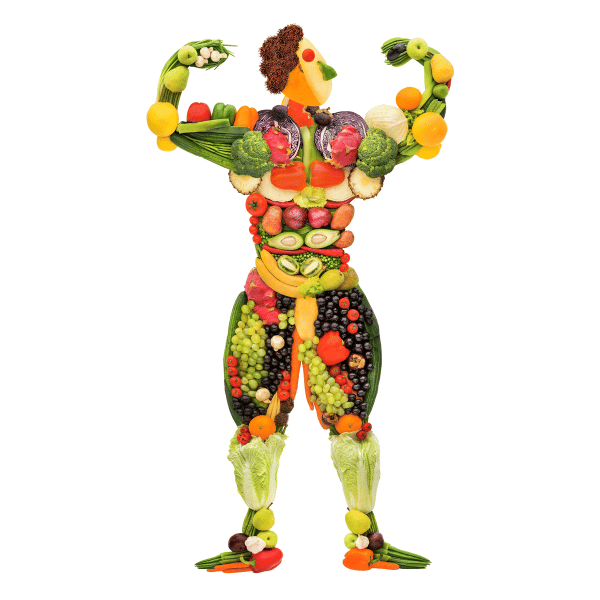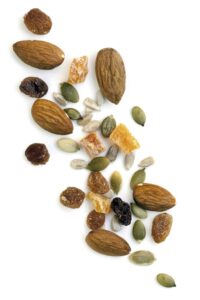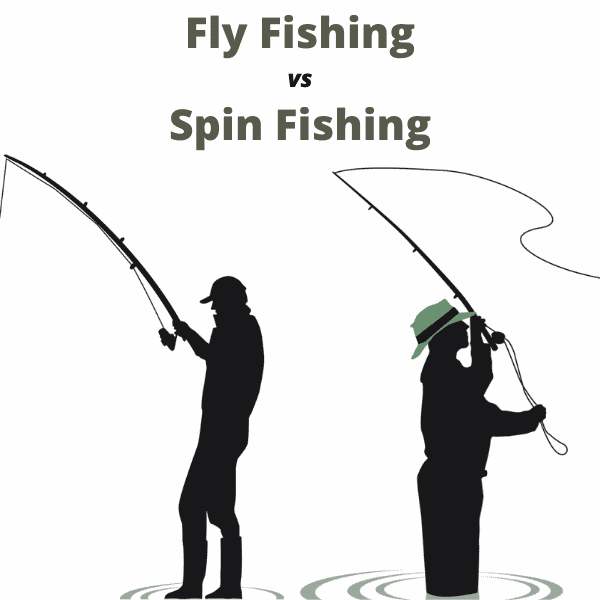Guide to Vegan Backpacking Food Options

Being vegan backpacking can be both difficult and beneficial when it comes to vegan backpacking food and vegan backpacking snack ideas.
In this guide, we dive into the best vegan backpacking food ideas, including nutrition, meals, and snacks.
Contents
Vegan Backpacking Food Nutrition

Maintaining a healthy nutritional balance is just as easy while backpacking as it is when you are comfortable in your home. As a vegan, you are most likely more aware of your intake of protein, calcium, iron, B12, and zinc – nothing changes when you are spending more time out in nature.
A day of strenuous hiking which often accompanies camping and having to eat outdoors can change the game a little bit. Celery, cucumber, lettuce, tomatoes, and carrots all contain a high water content which can help you rehydrate without the need for drinking large amounts of water.
Eating something heavy in protein while you are camping, such as lentils, will help you replenish your strength for the next day of hiking. If you do take lentils, try to source some that take less time to cook so you can conserve gas in your camping stove.
A mixture of fruits such as bananas and apples with nuts as snacks will help to maintain a balance of natural sugars and protein while on the go. They are also easy to store and carry while outside.
Some vegans take nutrient supplements to ensure that they stay balanced. Taking powders or tablets with you while camping is perfectly acceptable. Be sure that any powders are securely stored so they do not spill in your backpack.
Backpacking Pack Weight of Vegan Food
The problem with eating while out in the wilderness is that to get the maximum flavor, you often require the maximum amount of ingredients and more equipment with which to cook it. It is difficult to find the perfect balance between lightening your backpack and not eating bland food.
Products such as couscous and dried soya are very lightweight but can be either hard to store securely in a backpack or bulky. Canned goods such as coconut milk or canned tomatoes are more secure but can heavy to carry around.
Water is heavy but can often be replenished along the way with purified natural sources or by visiting towns. It is important to eat and drink enough to sustain whatever activity you are partaking in, even if it means carrying a little more weight.
Vegan Backpacking Snacks & Ideas

Snacking while hiking is a fantastic way to keep up your energy and your motivation between snack breaks. Traditional favorites, such as trail mixes and nuts keep your energy and protein levels high and are easy to pack into a side pocket of your backpack.
Fresh fruit and vegetables, particularly those high in water content are also worth packing in an accessible place. Apples, bananas, carrot & celery sticks, and pieces of capsicum/bell pepper are all choices worthy of your consideration.
For those who need that extra sugar boost that fresh fruit doesn’t always supply, why not take some dark chocolate with you? It is compact and light, just be sure to pack it somewhere cool if you are hiking somewhere warm and sunny so that it doesn’t melt. There is nothing more anticlimactic than opening your much-anticipated bar of expensive dark chocolate, only to find it in liquid format and inedible.
Lastly, many hikers like to celebrate at the summit with a beer. Almost all beers are processed in a vegan-friendly manner so it is, of course, possible to join your friends in a toast at the top. Just be aware that alcohol is dehydrating, beer bottles are heavy, and that hiking in dangerous and unknown places while intoxicated is not a good idea.
Vegan Backpacking Meals & Ideas
Many vegan meals you would cook at home are highly suitable for outdoor creation and consumption. Almost anything you cook on a stovetop can be easily recreated in nature.
A very basic and lightweight one-pot meal that would help to give you a good boost of carbohydrates and protein is a Brazilian classic – rice and beans. Once the rice is cooked you can simply stir in a can of black beans in the sauce they come in until it is warm throughout. Only one pot is required, and it takes only a little longer than the rice takes to cook. To make the meal more exciting, consider packing a portable spice carrier with you and add in some cayenne pepper, salt and pepper, and a bay leaf.
Another single pot idea is pasta with a vegan pesto. This student-staple is ideal because you are only required to carry a pack of pasta and a jar of pesto with you, making it very lightweight. Do check that your pesto is actually vegan as most of the more commercial brands have parmesan cheese mixed in, which normally isn’t even vegetarian.
If you have access to multiple stoves or can heat more than one pot at a time, this vastly increases your options. A Thai curry with fresh vegetables and coconut milk is nice, or a Chilli sin Carne, but would require a fair few ingredients which can quickly add up to a lot of extra weight in your backpack. A simple tomato pasta requires fewer ingredients but is somewhat less exciting to most people.
When deciding what to eat, consider how many pots at once have to be cooking ingredients and how much weight you will have to carry with you. Almost any meal is possible, just maybe not desirable when compared against these parameters.
Vegan Food Storage While Backpacking
Luckily, for vegan backpackers, the storage of food is much simpler than for those who like to go camping with meat or dairy products. Plant-based products can usually withstand a higher range of temperatures and still be fine to eat than dairy or meat products. They also stay fresher for a longer amount of time.
Products such as Tofu do benefit from being refrigerated at home. While camping, be sure to keep it in a cool shaded place during the day such as the bottom of your backpack, and outside your tent, protected from hungry animals at night. This will help to keep the temperature down and to keep the product for longer. It is also worth considering eating products you would normally refrigerate, such as tofu, on the first or second night of your trip to avoid the potential of falling ill.
Rice, lentils, pasta, and couscous are all popular vegan options for backpackers. If you are carrying these products while tramping, be sure that they will not spill all over your backpack. Lockable lunchboxes are good but bulky. You can also wrap them tightly and store them far from anything that can pierce their packages near the top of your backpack where there is less irritation.
Vegan Backpacking Food FAQ
Many supermarkets have pre-prepared vegan meals, but these often require refrigeration. They are beneficial in that they often only require a single pot to heat up, and not much time, but be sure not to take any that need a microwave. You can also get dried vegan meals from an outdoor shop that need water added. These, while weight-saving and fascinating in concept, can often be quite bland.
Unfortunately, fresh fruits and vegetables can be quite heavy to carry, however, if you are willing to do so, there are many things you can grill at the campsite. Slices of eggplant coated in spaces (which can be prepared at home and carried in) taste fantastic when grilled. Consider filling some jalapeño peppers with hummus or with vegan cheese. You could also make up some black bean burger patties.
Many of these options are best prepared at home and carried to the campsite. Many are best consumed on the first day as well to ensure that they are still fresh.
The question of ethics around vegans can be complicated but simply put, everybody should be allowed to decide for themselves what they want to eat. If you want to emphasize with your friend a little more you can certainly try going vegan for a couple of days, and you may even start to feel some health benefits.
Be aware that many vegans will not want to use the same pots, pans, plates, and cutlery as those which are used by meat-eaters, and be careful to only offer them suitable snacks so that you do not upset them.




